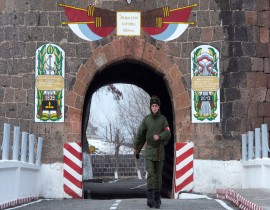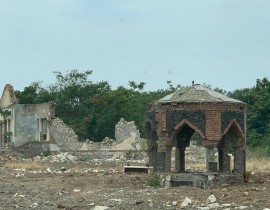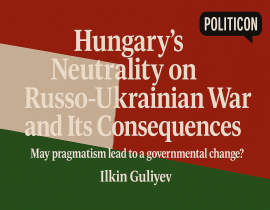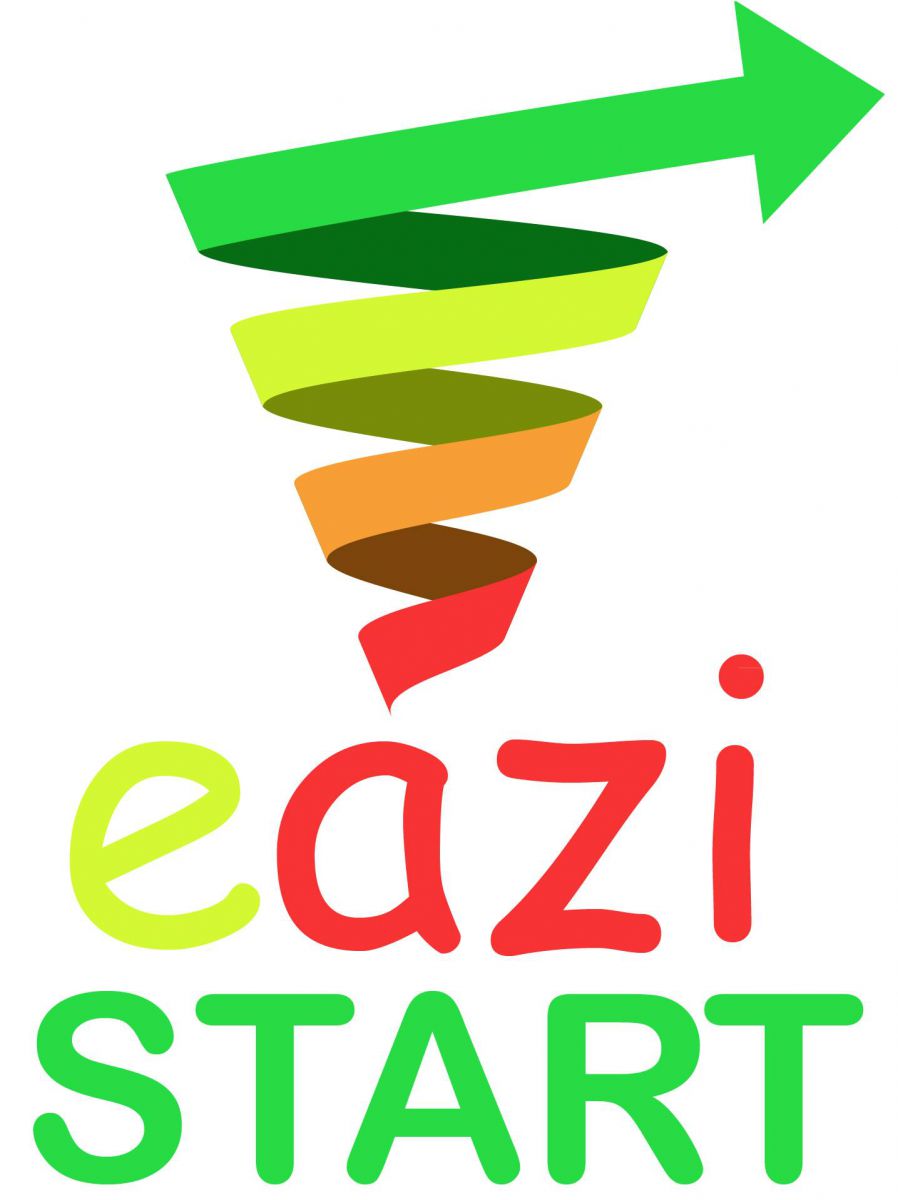Politicon.co
The Geopolitics of the Middle Corridor: A Critical Examination of Trade Routes and Azerbaijan's Strategic Position
Abstract
This article critically examines the geopolitical underpinnings of the Middle Corridor trade route. The Middle Corridor, passing through the territories of the Turkic states, including Azerbaijan, is becoming increasingly relevant in the contemporary global trade dynamics. This study focuses on the strategic importance of Azerbaijan in this context and provides a comprehensive understanding of the critical factors that influence the potential of this route.
Introduction
The emergence of Kilicdaroglu's map has stirred debates and discussions in geopolitical and trade circles, causing scholars and policymakers alike to ponder not merely its underlying purpose, but more essentially, the practicality of its manifestation (Haber7, 2023). This map, suggesting a different perspective on established trade routes, compels us to reconsider the pre-existing dynamics and feasibility of new trade paths.
China, currently at the center of global trade, heavily depends on two main arteries for its vast trade activities. The first, known as the Northern Route, passes through the vast expanses of Russian territory, serving as a significant conduit for land-based commerce This route, due to its overland nature, offers certain advantages such as the potential for large-scale transportation and a lower risk of weather-induced disruptions (Lu, Z, 2016).
The second key route, or the Southern Route, heads southwards, making extensive use of maritime pathways. This sea-based route, given its large capacity and relatively low cost, is the preferred choice for transporting the majority of China's cargo. (Zhang, Y., & Alon, I, 2018). The shipping industry, underpinned by advancements in technology and infrastructure, continues to be an economical and efficient mode of global trade. However, reliance solely on maritime routes can expose trade to vulnerabilities such as piracy, maritime disputes, and potential chokepoints in sea lanes.
Despite the dominance of maritime transport in global trade, the strategic significance of overland routes, often referred to as the "lifelines of trade," should not be underestimated. These routes serve as critical backups during times of maritime disruptions, and their importance becomes pronounced in the transportation of goods that are time-sensitive or require special handling.
The introduction of Kilicdaroglu's map into this context prompts a re-evaluation of the existing trade routes, sparking discussions on the potential reorientation of global trade flow. It implicitly raises the question of whether there is room to create a new, viable trade route that could serve as a supplementary or even alternative path for China's massive trade operations. As such, the map is not merely a representation of potential trade paths but a catalyst for a broader discourse on the future of global trade dynamics.
Post-Russia-Ukraine War Trade Dynamics
The geopolitical landscape of trade was fundamentally altered by the war between Russia and Ukraine. This conflict and the subsequent sanctions imposed on Russia by the international community have created uncertainties surrounding the Northern Route that passes through Russian territory. These geopolitical perturbations have manifested as tangible concerns about the security and stability of this vital artery of commerce, leading to an exploration of alternative pathways.
The market for China's trade is primarily European, underlining the significance of maintaining reliable and secure routes between these two key global economic regions. However, the current geopolitical tensions and economic sanctions on Russia have engendered a growing reluctance among European stakeholders to depend on a trade route passing through Russian territory. The resulting instability and unpredictability have increased the operational risk and costs associated with the Northern Route.
This uncertainty, coupled with the desire to maintain seamless trade relations between Europe and China, has necessitated the search for alternative overland routes. Such alternative routes would need to be strategically located, geopolitically secure, and logistically feasible to handle the immense volume of trade between these two economic powerhouses.
In this context, the concept of the Middle Corridor has come to the forefront. This route, passing through various Turkic states, including Azerbaijan, offers a potential alternative to the existing Northern Route. The Middle Corridor presents an opportunity to circumvent the geopolitical issues associated with the Russia-dominated Northern Route, thereby providing a more secure and stable trade path. (Kavak, O., & Balcik, F. B, 2016).
However, the realization of the Middle Corridor as a significant trade route would require extensive investment in infrastructure, international cooperation, and careful navigation of regional politics. Its viability would also depend on its ability to compete with maritime routes in terms of cost, reliability, and speed. Despite these challenges, the Middle Corridor's potential role in diversifying trade routes and mitigating geopolitical risks has placed it firmly in the spotlight of global trade discussions.
Azerbaijan's Strategic Position
Azerbaijan, situated at the crossroads of Europe and Asia, is uniquely positioned to serve as a hub for the proposed Middle Corridor. Its geographic location and established infrastructure make it a potential linchpin in the development of this new trade route.
Over the years, Azerbaijan has embarked on an ambitious course of strategic planning and infrastructural development in anticipation of the increased importance of this trade corridor. The government has invested heavily in developing and upgrading its infrastructure, including roads and railways, to ensure it is equipped to handle increased trade volume.
Furthermore, Azerbaijan has undertaken an expansion of its ports to accommodate larger volumes of cargo and facilitate efficient movement of goods. The nation has also established the largest logistics fleet in the Caspian, further highlighting its readiness to handle increased trade traffic.
A significant step towards the realization of Azerbaijan's strategic plan is the commencement of oil transportation using Azerbaijan’s locally produced oil tankers. This move not only demonstrates Azerbaijan's operational readiness but also underlines its capacity to handle high-value commodities, a crucial factor in its potential role as a major conduit in the proposed Middle Corridor (Gawliczek, P., iskandarov, K, 2023).
The transformation into a significant transport hub is not merely an economic objective; it represents a long-term strategic goal for Azerbaijan. It aligns with the nation's vision for economic diversification and reduced dependence on oil revenues in the post-oil era. Furthermore, this strategic transformation holds immense importance for national security. By becoming a crucial player in global trade routes, Azerbaijan would gain significant geopolitical leverage, thereby enhancing its position on the global stage and contributing to the security of the state.
Overall, Azerbaijan's strategic position, coupled with its proactive approach to infrastructure development and long-term planning, positions it as a key player in the realization of the Middle Corridor. The nation's transformation into a transport hub represents a strategic move towards economic diversification and enhanced national security in a rapidly evolving geopolitical landscape.
Iran's Geographic and Political Constraints
Iran's unique geographical makeup, characterized by vast expanses of mountainous and arid terrains, presents considerable obstacles in developing an efficient trade route. This rugged landscape makes construction and maintenance of infrastructure such as roads and railways significantly challenging and costly. Moreover, the country's climatic conditions, marked by extreme temperatures and scarce rainfall, further compound these difficulties. Such geographical impediments would invariably translate to higher costs and extended timelines for trade route development, making Iran a less viable option for this purpose.
Beyond geographical challenges, Iran currently lacks the necessary infrastructure to support a major trade route such as the Middle Corridor. Developing a new infrastructure from scratch to meet the demands of heavy trade volume would be a herculean task, requiring extensive resources, including time, labor, and finances. Given the current economic climate and the considerable capital investment required, estimated to be in the order of billions of dollars, it
seems improbable that the necessary resources could be mobilized for such a project within a reasonable timeframe. (Total News, 2023)
Lastly, Iran's strained relationship with Europe and the West poses significant political obstacles. The tensions and mutual mistrust between Iran and Western nations make it an unlikely choice for the establishment of a major trade route primarily servicing the European market. Moreover, the ongoing sanctions and political isolation faced by Iran further undermine its suitability as a reliable and stable hub for international trade.
In summary, while Iran's location might theoretically position it as a possible route for the Middle Corridor, the reality is much more complex. The convergence of geographical challenges, infrastructural constraints, and political impediments significantly diminishes Iran's viability as a contender in the establishment of this new trade route.
Discussion
A critical aspect that requires attention is the unfortunate tendency among certain factions to undervalue Azerbaijan's capabilities, potential, and long-term strategy. They question the feasibility and strategic value of the Middle Corridor, casting doubts on Azerbaijan's ability to fulfill this ambitious role. It is crucial to note that these doubts often stem from a lack of understanding or appreciation for the significant preparatory work Azerbaijan has undertaken to position itself as a strategic transportation hub. Over the years, the country has invested heavily in its infrastructure, developing an extensive network of roads and railways, and advancing its logistics capacity. This demonstrates not only Azerbaijan's readiness but also its commitment to the Middle Corridor project.
The discourse surrounding the Middle Corridor often references the historic Silk Road, implying an obligation to follow this ancient trade route. However, it's important to underscore that the term "Silk Road" in the present context serves as a symbol, a nod to the past rather than a blueprint for the future. It harkens back to a time when the region was the heart of a bustling trade network, but it doesn't impose a rigid path that must be adhered to in the modern era. Therefore, the focus should not be on adhering to the historical Silk Road route but rather on finding the most efficient, safe, and feasible routes for today's geopolitical and economic realities.
It is essential to foster a well-informed understanding of this issue. This involves following relevant media coverage, listening to insights from experts in the field, and reading academic articles that offer in-depth analysis. It is through such informed understanding that we can navigate the complexities of this issue and appreciate the significance of Azerbaijan's role in the proposed Middle Corridor. The discourse surrounding this topic should be grounded in factual information and informed analysis, rather than unfounded doubts or misconceptions.
Conclusion
It is of utmost importance to approach skeptics of the Middle Corridor through Azerbaijan with a discerning eye. It's necessary to consider the motivations that drive those who question its potential, as they may be influenced by external interests that are not aligned with the global trade goals the Middle Corridor seeks to achieve. Their position may be influenced by their alignment with the objectives of Russia and Iran, which could potentially signal a desire to maintain the current trade dynamics, even if it comes at the cost of global trade efficiency and security.
It is crucial to remember that support for Russia often implies support for Iran and vice versa, due to their shared geopolitical objectives and mutual interests. This isn't a straightforward intellectual debate. It's a complex geopolitical issue with profound implications for global trade, regional power dynamics, and national security concerns. Therefore, the discourse surrounding the Middle Corridor needs to transcend mere intellectual debate and recognize the broader geopolitical context that it exists within.
References:
Gawliczek, P., & Iskandarov, K. (2023). The Zangezur corridor as part of the global transport route (against the backdrop of power games in the South Caucasus region). Security and Defence Quarterly, 41(1), 36-53. https://doi.org/10.35467/sdq/161993
Haber7. (2023). Azerbaycan'dan Kılıçdaroğlu'na sert tepki: O harita Türk dünyasını böler. Retrieved from https://www.haber7.com/siyaset/haber/3323255-azerbaycandan-kilicdarogluna-sert-tepki-o-harita-turk-dunyasini-boler
Kavak, O., & Balcik, F. B. (2016). The Middle Corridor: A rising transit route in Eurasian transportation. Journal of Transportation Technologies, 6(2), 89.
Lu, Z. (2016). China's Belt and Road Initiative and Its Implications for Global Trade. Journal of International Trade & Economic Development, 25(6), 783-800.
Total News. (2023). Improving transit capacity to Iran. Retrieved May 10, 2023, from https://totalnews.com.tr/en/improving-transit-capacity-to-iran
Zhang, Y., & Alon, I. (2018). A guide to the Belt and Road Initiative: Globalization with Chinese characteristics. Thunderbird International Business Review, 60(5), 651-668.
![]()
- REGIONS :
- Central Asia

jpg-1684147271.jpg)



png-1748065971.png)



jpg-1599133320.jpg)

